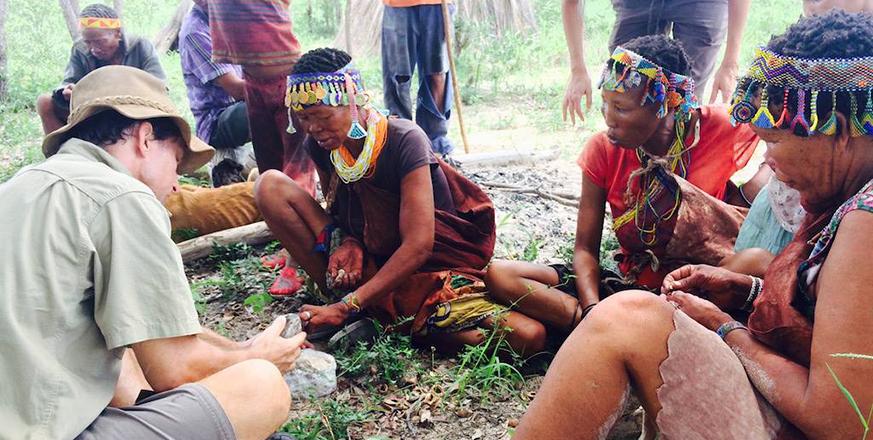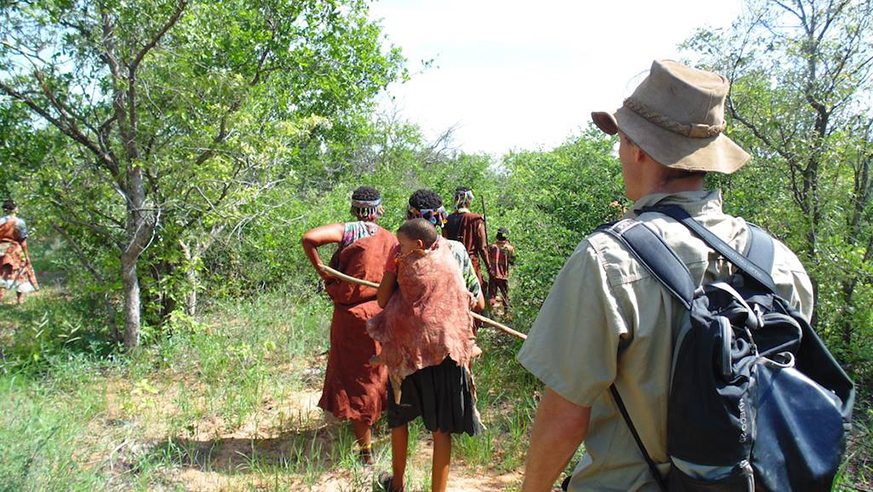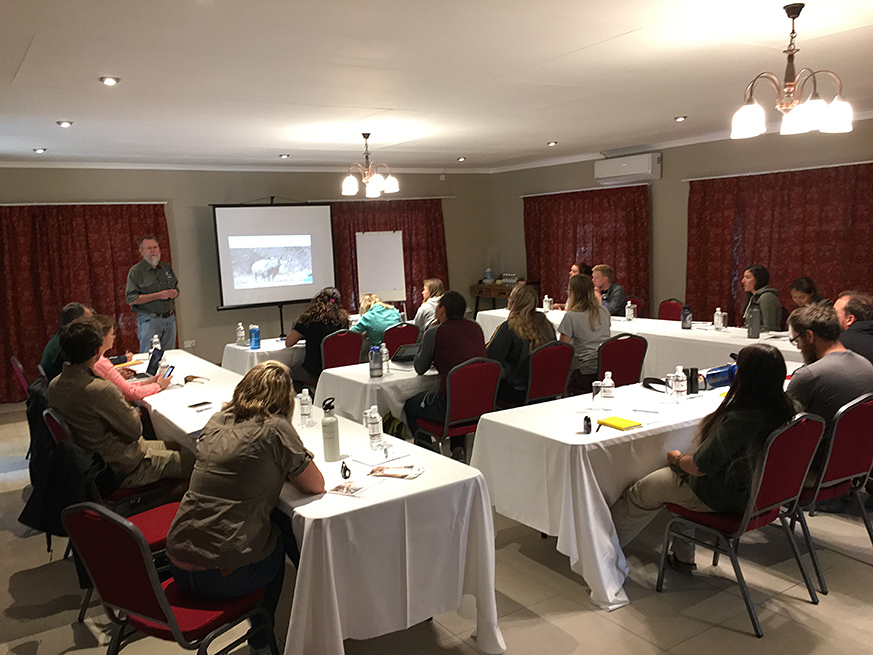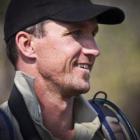Notes from the Field: Jordana Meyer and Simon Morgan - Learning from NGOs

We google, we analyze reports, read scientific papers, follow trends and calculate stats on the well-being of the planet’s flora and fauna, all the while judging and contemplating communities attempting to coexist with wildlife. We often romanticize working in these regions, however being far removed from the realities of the hardships and unpredictability of working in these spaces.
We had the great fortune to meet with five outstanding organizations working in Botswana to conserve rhino, cheetah, elephant, lion and the cultural heritage of the First People, with a focus on human-wildlife mitigation strategies. It was a great opportunity for students to meet and learn from frontline conservationists in person, and to realize that they could be the next generation of conservationists to apply themselves to these important endeavors.
Rhino Conservation Botswana (www.rhinoconservationbotswana.com)
Map Ives, Director of RCB, spoke about the "Enhancement of rhino conservation and management in Botswana."
RCB has been entrusted by the Botswana government to monitor Botswana’s rhinos and ensure that they remain healthy and strong. RCB believes that rhinos must be preserved for future generations. They are a crucial part of the ecosystems that sustain our planet – and the human race. Their survival is inextricably linked to our own. That’s why we’re working hard to give them a future.

Cheetah Conservation Botswana (www.cheetahconservationbotswana.org)
Jane Hogan, Education and PR coordinator at CCB, spoke about "Local is Lekker, the use of livestock guarding dogs in Botswana."
Cheetah Conservation Botswana aims to preserve the nation’s cheetah population through scientific research, community outreach and environmental education, working with rural communities to promote coexistence with Botswana’s rich diversity of carnivore species. The problems of habitat loss, population fragmentation and human encroachment on wild areas are bringing human-wildlife conflict into the forefront of conservation for many species. These factors, in combination with the threat from poaching and declines in prey species availability, are the focus behind CCB's conservation strategy.
Ecoexist (www.ecoexistproject.org)
Anna Songhurst, Field and Program director at Ecoexist, spoke about "Ecoexist Projects – finding ways for people and elephants to coexist."
The Ecoexist Project seeks to reduce conflict and foster coexistence between elephants and people. In areas of heightened competition for access to water, food, and space, they find and facilitate solutions that work for both species.
Ecoexist connects science with practice. They gather social, ecological, and economic data to analyze the causes and consequences of human-elephant conflicts. With that analysis, and in collaboration with partners, Ecoexist find strategies for coexistence.
Oxford’s Wildlife Conservation Research Unit (www.wildcru.org)
Kristina Kesch, program coordinator from the Trans Kalahari predator program under WildCRU spoke about the "Landscape resistance and connectivity of lion populations in the Kavango-Zambezi Transfrontier Conservation Area (KAZA – TFCA)."
The Trans-Kalahari Predator Program is one of WildCRU’s largest projects, focused on the predators of southern Africa and their conservation and interactions with people. The program encompasses ecological research with a focus on African lions (and increasingly other predators), ecologically sustainable transboundary land use management in the Kavango-Zambezi Transfrontier Conservation Area and the promotion of coexistence of humans and predators to simultaneously improve human livelihoods and safeguard globally threatened lion populations.

Kalahari Wildlands Trust (www.kalahariwildlandstrust.com)
Author & Sandi Albertson, founders of KWT, speaking about the invaluable cultural knowledge of the San Bushman (the First People), and how it is quickly disappearing.
The Kalahari Wildlands Trust mission is to conserve the Kalahari’s unique wilderness and cultural heritage through community based conservation action. The KWT has been formed to secure support for its existing and planned work relating to the conservation of the Kalahari's fast disappearing natural and cultural heritage.
A HUGE thank you to these incredible organizations for all of their efforts, please feel free to check out their websites and get involved yourself!
 Simon Morgan, JRBP Research Associate
Simon Morgan, JRBP Research Associate
 Jordana Meyer, JRBP Docent and PhD student in the Hadly Lab
Jordana Meyer, JRBP Docent and PhD student in the Hadly Lab



